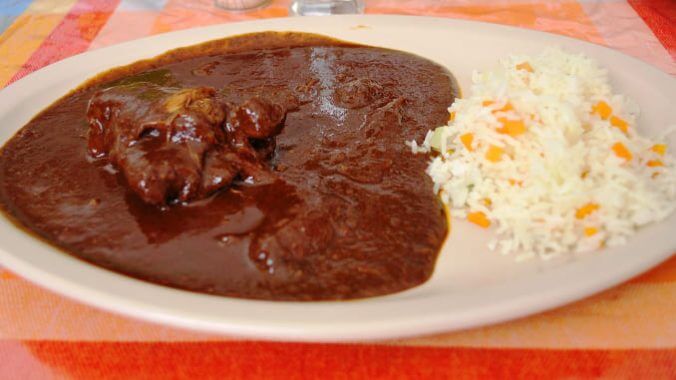Making Mole: A Culinary Quest to Connect With Mexican Culture
Photo by Alejandro Linares Garcia/Creative Commons
Being Mexican-American and living in a border state, I have high standards for Mexican food. I like the taste that I’ve developed from eating the best at both hole-in-the-wall restaurants and at home for 31 years. However, I don’t consider myself a food snob. I still enjoy Taco Bell late at night even though everyone knows that it’s not real Mexican food. When I’m craving what tastes authentic to me, I like to cook the recipes that have been in my family for generations.
I was spoiled as a kid to be able to eat homemade tacos, refried beans, rice, tamales, sopa and more, all made by the women in my family. These were recipes that were passed down to them, so they were both uniquely theirs and uniquely Mexican. I remember that they would all congregate in my grandma’s kitchen and talk while each person would be in the midst of their assigned tasks. I was quite young at the time, so I was too little to properly help, but that didn’t stop my grandma from giving me my own assignment.
“Here, Sarah, you can sort out the beans and wash them.” She would hand me a bag of pinto beans from the local barrio store. I would spill them out onto the table and try to find pebbles or beans that weren’t worthy of being cooked. When I was done, she would bring out a step stool and a strainer so I could wash the beans for her. Unlike other kids who saw helping cook as a chore, making our family recipes gave me pride because I was learning something new that my whole family would enjoy together.
Even now, flipping tortillas over a gas stove flame with my bare hands or making sure the masa in my tamales floats makes me feel that connection to my ancestry. When I cook my family’s Mexican recipes, I am transported back to being a little kid with my stomach growling, waiting to eat.
However, there is one recipe that was lost in translation for my family, and that is Mexican mole. The first time I saw mole was in the grocery store with my mom. It was a jar with a dark brownish-red paste with the name “Doña Maria” emblazoned in red on a bright yellow background. It was next to the other familiar Mexican foods like Knorr bouillon, Abuelita hot chocolate and Goya pinto beans.
“Hey, mom, what’s that?” I asked her and pointed to the glass jar of mole paste.
“I don’t know,” was her answer.
-

-

-

-

-

-

-

-

-

-

-

-

-

-

-

-

-

-

-

-

-

-

-

-

-

-

-

-

-

-

-

-

-

-

-

-

-

-

-

-








































